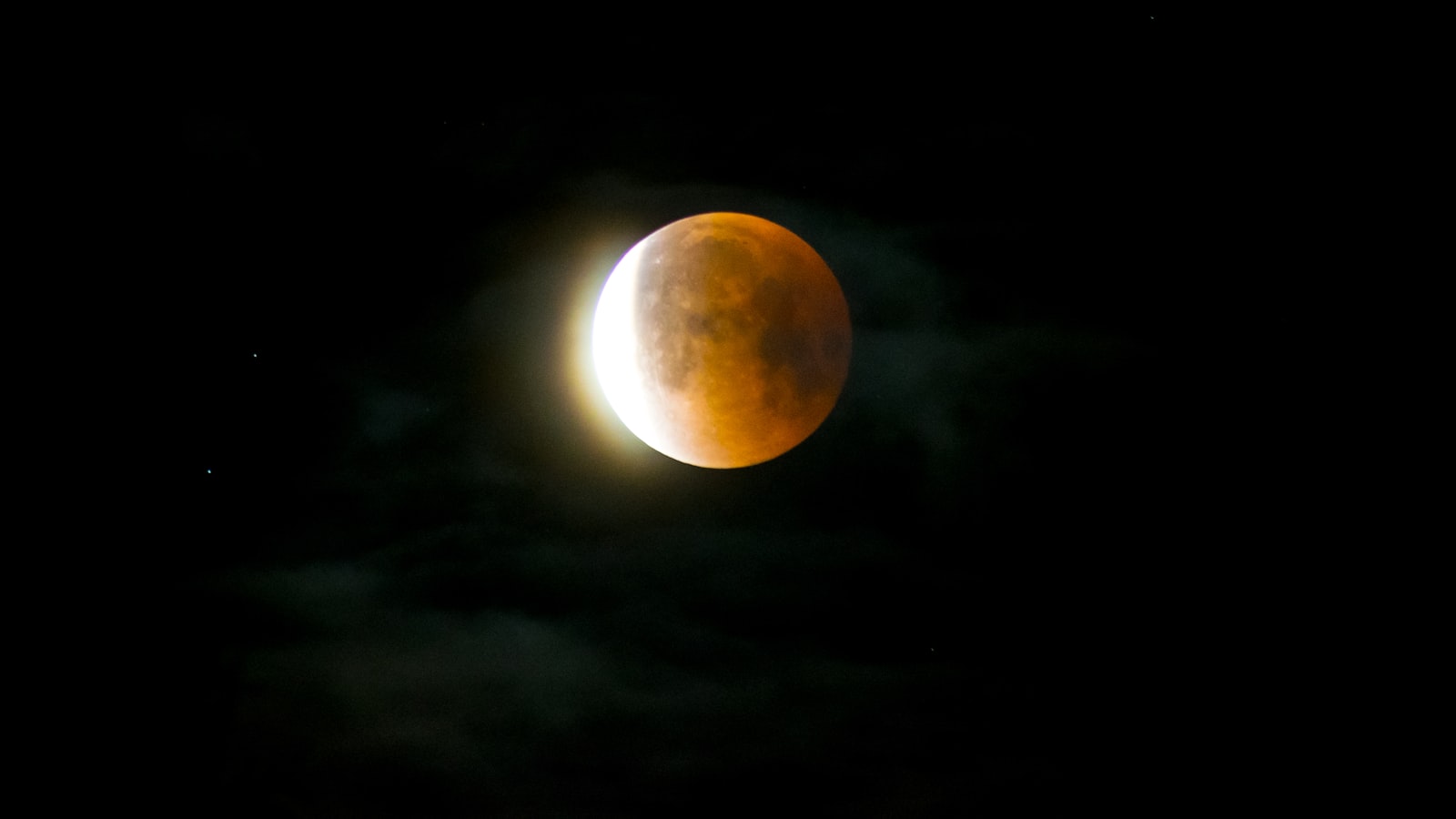Ever since ancient times, humans have been fascinated by the celestial dance that decorates our skies. A lunar eclipse, often viewed with awe and intrigue, is one such natural spectacle that continues to capture our imagination. Whether you're an avid skywatcher or a curious bystander, the sudden transformation of the familiar full moon into a mysterious, dimly lit orb is an experience worth exploring.

Moon's Rendezvous with Earth's Shadow
Understanding the Celestial Phenomenon
A lunar eclipse occurs when the Earth comes between the Sun and the Moon, blocking the sunlight that normally reflects off the Moon. Unlike solar eclipses, which require protective eyewear to view safely, lunar eclipses are safe to observe with the naked eye. There are three types of lunar eclipses:
- Total Lunar Eclipses: The Moon is entirely within Earth's umbra, taking on a reddish color.
- Partial Lunar Eclipses: Only a portion of the Moon enters Earth's umbra, while the rest remains illuminated.
- Penumbral Lunar Eclipses: The Moon passes through Earth's penumbra, causing a subtle shading that is difficult to observe.

The Blood Moon Enigma
When a total lunar eclipse occurs, the phenomenon is often referred to as a "Blood Moon" due to the reddish hue that the Moon takes on. This color change is caused by Rayleigh scattering—the same process that gives sunsets their vibrant colors—as Earth's atmosphere filters and refracts sunlight onto the darkened Moon.

Mark Your Calendars: Upcoming Lunar Eclipses
To ensure you don't miss out on the next lunar presentation, it's crucial to keep abreast of upcoming dates. Eclipse calendars are a treasure trove for enthusiasts, detailing when and where you can witness these celestial events. For a personalized schedule, tools like Eclipse Timer can provide exact timings and dates for lunar and solar eclipses in your area.

From Superstition to Science: The Evolution of Eclipse Beliefs
A Brief Historical Context
In ancient times, eclipses were often interpreted as omens. The Incas believed a lunar eclipse was the result of a jaguar attacking the Moon, and in Mesopotamian texts, a lunar eclipse was a direct threat to the king's life. Today, through the lens of modern science, we understand lunar eclipses as awe-inspiring events that are predictable and hold profound educational value.
Educational Opportunities Abound
Lunar eclipses offer more than just beauty; they are a gateway to understanding our place in the universe. These events serve as practical lessons in orbital dynamics and celestial mechanics. Observing an eclipse can be a tangible way to grasp the concepts of shadow and light, distance, and the scale of the cosmos.
Preparing for the Eclipse: Your Viewing Checklist
To get the most out of a lunar eclipse viewing experience, you'll need to be well-prepared:
- Check Local Timings: Utilize tools such as Eclipse Timer to determine the timing of the eclipse in your area.
- Find a Clear View: Choose a location with a clear view of the sky, away from bright city lights.
- Dress Appropriately: If it's occurring during colder months, dress warmly.
- Gather Your Gear: While no special equipment is needed, binoculars or a telescope can enhance the view.
- Capture the Moment: A camera with a long lens can help you photograph the eclipse, though it requires some skill to capture the low light conditions.
- Eclipse Snacks: Enhance the experience with your favorite snacks and drinks. Why not?

Connecting with the Eclipse Enthusiast Community
Sharing the Experience
Joining local astronomy groups or online forums can add a social element to eclipse viewing. Share tips, experiences, and photos with like-minded individuals who share your passion for the skies.
Educational Outreach
If you're inclined, lunar eclipses present an opportunity to engage in educational outreach. Organizing public viewings or educational sessions can promote awareness and understanding of celestial events.
Eternal Dance: Eclipses in the Art and Culture
Eclipses have long been a source of inspiration in art, literature, and music. From Shakespearean plays to contemporary pop songs, the symbolism of an eclipse is a powerful motif that speaks to the human experience of wonder and mystery.
In the Shadow of the Moon: Lunar Eclipses in Mythology
Many cultures have myths tied to lunar eclipses, often involving a conflict or a chase. These stories reflect the fear and fascination that our ancestors felt toward these celestial events.
A Reminder of Nature's Magnificence
Each lunar eclipse serves as a humbling reminder of our planet's intricate movements and the grand scale of the universe we inhabit. The shared experience of watching an eclipse can unite people across the globe in collective wonder.
Conclusion: The Celestial Tapestry Unfolding Above
The next time you find yourself under the shadowed moon, remember you're participating in a timeless tradition of eclipse watching—a ritual older than written history. So here's to clear skies and the enthralling beauty of our cosmos. Keep your eyes to the heavens, and your spirit of curiosity alight. And don't forget, the next solar eclipse is just around the corner; make sure to gear up with safe solar viewing glasses from Absolute Eclipse, trusted by the American Astronomical Society's Solar Eclipse Task Force and selling ISO 12312-2:2015(E) compliant glasses. The celestial theater awaits!




















